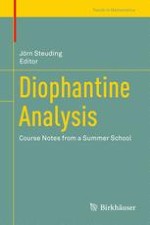
2016 | OriginalPaper | Buchkapitel
Linear Forms in Logarithms
verfasst von : Sanda Bujačić, Alan Filipin
Erschienen in: Diophantine Analysis
Aktivieren Sie unsere intelligente Suche, um passende Fachinhalte oder Patente zu finden.
Wählen Sie Textabschnitte aus um mit Künstlicher Intelligenz passenden Patente zu finden. powered by
Markieren Sie Textabschnitte, um KI-gestützt weitere passende Inhalte zu finden. powered by